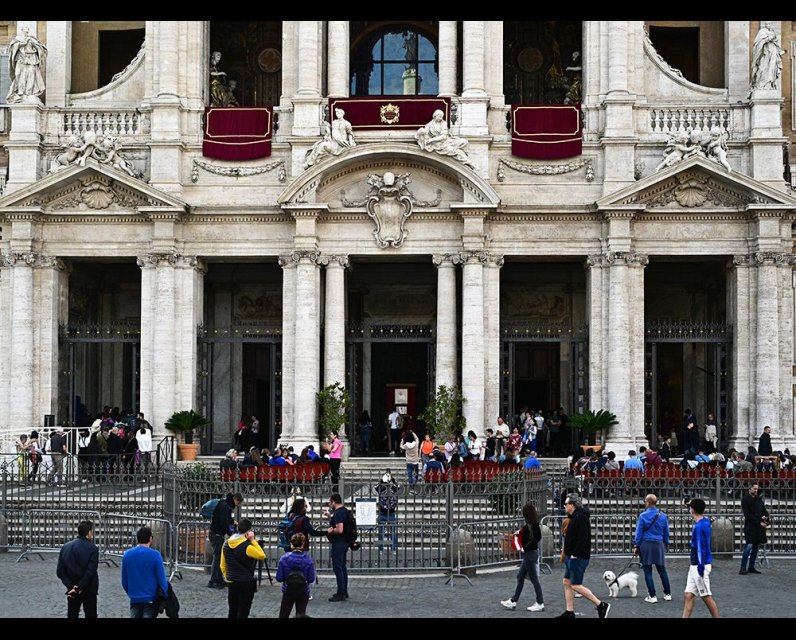Source Feed: National Post
Author: National Post Staff
Publication Date: April 21, 2025 - 16:01
What happens now that Pope Francis has died?
April 21, 2025

At 9:47 a.m. on Monday, the Vatican announced the death of Pope Francis.
But what happens now?
The death of the pope sets in motion the Sede vacante or interregnum, the series of rites that ends with the election of a new pope.
The interregnum begins when the camerlengo, personal representative of the Sacred College of Cardinals, certifies the death of the pope. The office of camerlengo, held currently by Cardinal Kevin Joseph Farrell, will also temporary run the administration of the Catholic Church in place of the pope.
The novendiales, or nine days of mourning, begins on the day of the pope’s death. There will be a period for visitors to view the pope’s body. In 2005, when Pope John Paul II died, millions came to pay their respects.
The funeral of the pope traditionally happens four to six days after death. The funeral is typically elaborate, featuring dignitaries from around the world, and tens or even hundreds of thousands of viewers. However, Pope Francis instructed that his funeral be simple. The most notable change he requested is that he wished to be buried in a wooden, zinc-lined coffin in Santa Maria Maggiore basilica, rather than in St. Peter’s Basilica where most popes are buried.
The most recent pope to be buried in Santa Maria Maggiore is Pope Clement IX, who died in 1669.
After the mourning period, the election for the new pope begins 15 to 20 days after the death of the pope. The election is known as the conclave, and is comprised of 120 cardinals. The cardinals then hold a mass in the Sistine Chapel where they are sworn to secrecy regarding the details of the conclave proceedings. Cardinals are sealed off for the conclave in the Domus Santae Marthae or “St. Martha’s House” for the period of the election.
The cardinals will cast their votes, through a secret ballot, inside the Sistine Chapel. The first day of the conclave will have one ballot while every day after that holds four, two in the morning and another two in the afternoon.
The cardinals write the name of a candidate on their ballot papers. Candidates must be a male and a baptized Catholic, and he needs a two-thirds majority of the cardinals in the conclave to become the next pope. The ballots are collected by three scrutineers, and the names voted are tallied and announced.
The ballots are burned in a stove and combined with chemicals to form either a black smoke, meaning no decision has been made, or white smoke, which indicates that a new pope has been elected. This smoke is visible to the public gathered in St. Peter’s Square via a chimney. Additionally, the bells of St. Peter’s Basilica are rung alongside the white smoke to help those gathered know the results.
When a pope is elected, the cardinals asks for his acceptance of the election as pope and his papal name. The conclave is disbanded by the new pope.
The new pope is introduced to the world from a balcony overlooking St. Peter’s Square as a cardinal announces “Habemus papem” or “We have a pope!”
The Pope then speaks his first words as the leader of the Catholic Church.
Our website is the place for the latest breaking news, exclusive scoops, longreads and provocative commentary. Please bookmark nationalpost.com and sign up for our daily newsletter, Posted, here.
Winnipeg Jets captain Adam Lowry was mobbed by teammates as white-clad fans stood and roared after he tipped in the winning goal 16:10 into double overtime for a 4-3 NHL victory over the St. Louis Blues in Game 7 on Sunday.
May 4, 2025 - 23:59 | | CBC News - Canada
The Montreal Victoire will face the Ottawa Charge in the opening round of the Professional Women's Hockey League playoffs.
May 4, 2025 - 21:34 | | CBC News - Canada
Over the past six months alone, health care workers have been stabbed, physically assaulted and told to run for shelter as bullets struck the outside of an emergency department in unrelated safety incidents at hospitals across Canada. Front-line workers say these violent events offer just a small glimpse at life behind ER doors, where verbal and physical violence appear to be rising, putting both patients and staff at risk. Primary among the concerns is the increasing presence of weapons – particularly knives.
May 4, 2025 - 21:00 | Alanna Smith | The Globe and Mail

Comments
Be the first to comment